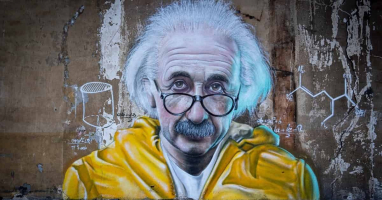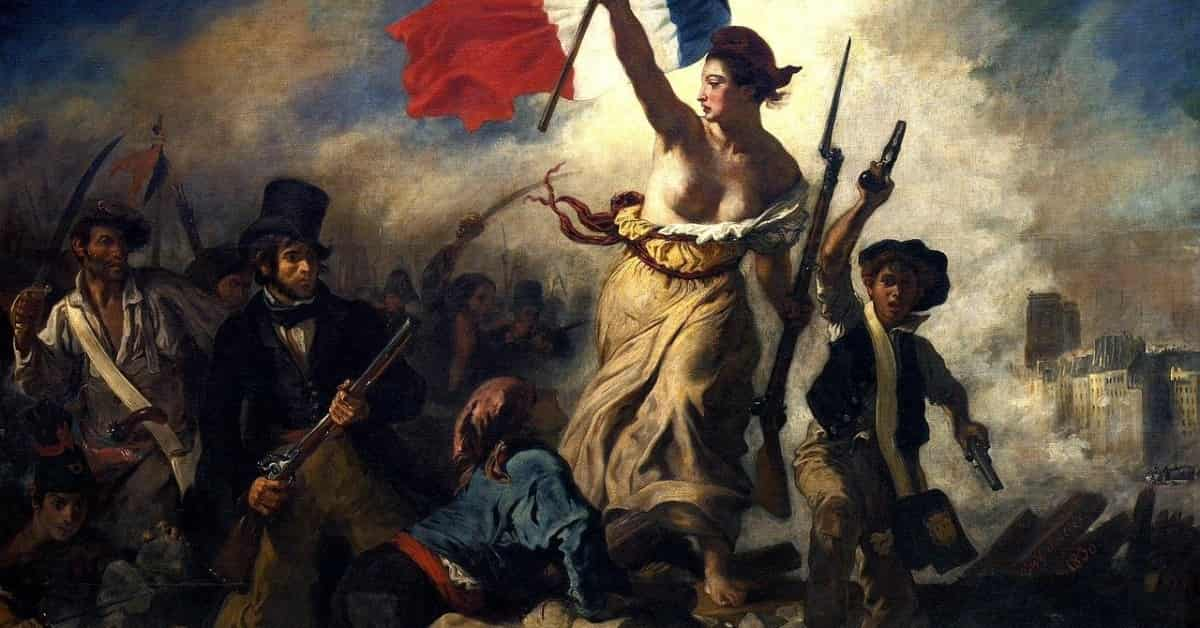I wrote this article in Japanese and translated it into English using ChatGPT. I also used ChatGPT to create the English article title. I did my best to correct any translation mistakes, but please let me know if you find any errors. By the way, I did not use ChatGPT when writing the Japanese article. The entire article was written from scratch by me, Saikawa Goto.
Introduction
Movies and books covered in this article
Three takeaways from this article
- There is hardly any description of Galois’s ‘group theory’ in this book.
- Although his misfortunes sometimes had positive results, ultimately he had his life ruined by too much bad luck.
- The truth behind Galois’s death is still unclear.
Self-introduction article


Published Kindle books(Free on Kindle Unlimited)
“The genius Einstein: An easy-to-understand book about interesting science advances that is not too simple based on his life and discoveries: Theory of Relativity, Cosmology and Quantum Theory”
“Why is “lack of imagination” called “communication skills”?: Japanese-specific”negative” communication”
The quotes in the article were translated using ChatGPT from Japanese books, and are not direct quotes from the foreign language original books, even if they exist.
About the Organization of This Article

This book is about a great genius in the history of mathematics, Galois, but unlike typical books about him, there is little description of the theory he created. The author of this book is a mathematician who has written many books about mathematics, but this book is more of a history book than a mathematics book.

On this blog, articles about Galois theory are also written, so those who want to know more about mathematical content, please read the article below.

Galois “died in a duel at the age of 20,” a rather peculiar way to die for someone who has left his mark on the academic world. However, there are not many works that portray his personality beyond this famous episode.
The author of this book seems to have a strong interest in Galois as a person, and unusually for a book by a mathematician, this book delves into the past of a great man. Additionally, as the author is a mathematician, readers can gain a sense of the incredible significance of Galois’s discoveries from a mathematician’s perspective. Overall, it can be said that this book provides an accurate and accessible portrayal of the real-life genius mathematician, Galois.

This article will focus on the events that sparked Galois’ interest in mathematics and revolutionary ideas, without going into all the details of the book’s contents.
The Book is a Biography of the Genius Mathematician Galois, Who Only Lived for 20 Years
How Genius Galois was
Although the book does not contain mathematical descriptions, the author’s appreciation for Galois’ brilliance is often emphasized.

First of all, just from this sentence alone, you can get a sense of how amazing Galois was.
It is no exaggeration to say that he left a huge achievement that is the greatest discovery in the history of modern mathematics. He didn’t just solve some problem, but his achievement fundamentally changed the history of mathematics. You could say he changed the paradigm. The principles and ideas he brought about are still alive in the foundation of mathematical research today and will be the same for centuries to come.
The idea that Galois came up with, called “group theory,” is something that can truly be said to form the foundation of modern mathematics. Without “group theory,” research in modern mathematics would be impossible, and it may even affect scientific research. It is truly a “revolutionary” discovery that changed everything from the roots.

It is written like this about the fact that a young man of just 20 years old achieved it.
If I translate it into our current situation, it’s like a high school student suddenly making a major discovery in modern mathematics. And it’s not just a simple discovery, it’s a huge and profound monument that changes centuries of history thereafter. Is such a thing really possible? It’s almost like I want to doubt it.

It would be like a high school pitcher achieving a perfect game in his debut in the Major League, for example. Anyway, I think we can say that he accomplished an incredible feat that not even manga can depict.
When Galois created “group theory,” there were no words or concepts to describe this way of thinking at the time. Galois had to explain his completely new ideas using only words that existed at the time. I think that it’s like explaining a smartphone using only words that existed during the Edo period (Japan about 400 years ago).

Because of these difficulties, the paper left by Galois on his deathbed, which is called “Galois’s first paper,” is very difficult to understand. Therefore, it was not easily accepted by mathematicians of the time.
The author also writes like this.
Of course, I don’t think I could have understood this paper if I had read it in 1831, for example.
In this book, you can feel the greatness of Galois more easily, as “active mathematicians talk about Galois’s greatness from a mathematician’s perspective.”

The author praises Galois and writes in the book, saying things like:
We can view the subject of mathematics from like this perspective as well. Galois, at only twenty years old, taught me this. That alone makes me happy!
As someone who is not a mathematician, I don’t fully understand the power of “group theory,” but thanks to mathematicians speaking about it in this way, I can indirectly appreciate its tremendousness.

A Textbook He Met Due to “Repeating a Year”
In France just before the birth of Galois, the importance of “education” was not well recognized. It was the French Revolution and Napoleon that changed that situation. Napoleon established “lycée”, a high school, and put a lot of effort into education.
One of the most prestigious schools among such “lycées” is “Louis-le-Grand”. Galois entered this school and was a very talented student who achieved excellent grades.
On the other hand, “Louis-le-Grand” was also known as a very strict school. Through his school life here, Galois personally experienced “autocracy” and “oppression”. These experiences are thought to have become the foundation for Galois’ thoughts on revolution. Additionally, although Galois was not directly involved, the “Saint Charlemagne Festival Toast Case” occurred, and the aftermath of that event was also remembered by Galois as an “event of autocracy wielding its power”.

Galois was a talented student, but got caught up in some trouble related to his advancement. He was promoted to the next grade once, but then sent back to his original class. However, this incident ultimately became a big turning point that sparked Galois’s interest in mathematics. This is because he came across Legendre’s textbook “Elements of Geometry” which was used in his original class.

Although the book is notoriously difficult and said to take two years to master, Galois is said to have read it in just two days. Whether this legend is true or not, Galois became completely focused on mathematics and started teaching himself by reading the works of great mathematicians who came before him.

A Teacher He Met Thanks to His “Failure in Entrance Examinations” and Evaluation by Mathematician Cauchy
Afterward, Galois aimed for “École polytechnique”. This is because it was a “residence” in Paris where there were top mathematicians, and since Paris was also a center of European scholarship, it was a great place to call the “center of the mathematical world.”
Galois wanted to enter “École polytechnique” as soon as possible, so he took the entrance exam a year earlier but failed. There are various theories about this failure, such as “the exam had become a dead letter” and “although he had sufficient ability, it was determined there was a problem with Galois’ attitude.” Galois himself seemed to have received it as “an unfair test.”

Galois continued to feel like he was not being treated fairly, even after his exam failure. This feeling of dissatisfaction eventually led to his rebellious thoughts against society.
But again, this time, the failure of the exam was not a negative thing for him. When he returned to “Louis-le-Grand,” he met Mr. Richard, an extremely talented and kind math teacher.
For the first time, Galois felt that he had met someone who truly understood and appreciated his abilities. As a result of this encounter, Galois was able to publish papers in academic journals and even submit them to the Academy, despite still being a student.

However, there is a famous story about the submission of the paper to this academy. The submitted paper was lost.
At the time, what Galois was thinking about was exactly what is now called “group theory,” and Mr. Richard immediately understood its pioneering and importance after reading Galois’ paper. So he aimed to submit the paper to the academy and eventually managed to pass it on to the leading mathematician of the time, Cauchy.
However, the paper that was supposed to have been passed on to Cauchy was lost somewhere. Moreover, it is said that Cauchy was not particularly interested in Galois’ paper. Generally, Cauchy, who appears in Galois’ story, is often portrayed as a person who “handled Galois’ paper roughly.”

However, the author presents a different view on this point from the general image.
According to the author, by tracing the various documents left by Cauchy, one can understand that “Cauchy correctly understood the importance of Galois’ paper.” So why is there an impression that “Cauchy was not interested in Galois’ paper”? The author points out that this may be because “Cauchy completely understood the contents of Galois’ paper.” This can be said to be a view unique to mathematicians.
Not limited to mathematicians, researchers are always preoccupied with their own research, so it is natural that their interest in “what they have once understood” will fade, the author argues. In other words, the reason why “Cauchy seems indifferent to Galois’ paper” is because “he understood Galois’ paper perfectly,” and he must have judged it as “content important enough to want to understand perfectly,” the author seems to feel.

I think it’s a very convincing way of looking at things. My impression of Cauchy has changed after reading this book.
However, this is a viewpoint from a later time. From Galois’ perspective at that time, it was still an experience that increased the impression of “not being treated fairly”. It’s really just unfortunate.
Galois Continues to Have Bad Luck

Well, after waiting for a year, Galois took the entrance exam for “École polytechnique” again. But lo and behold, the second attempt also ended in failure.

This second failure was treated as a major problem.
This incident was considered one of the rare major scandals in the history of French education.
That would be natural. Galois was a student, yet he had multiple papers published in academic journals, and he even submitted a paper to the Academy (although it was eventually lost). Nevertheless, he still failed the exam. At present, it isa said that there is a consensus that there must have been some sort of misconduct or error on the part of the school.

This had a devastating impact on Galois’s life. That’s because they’re only allowed to take the entrance exam for “École polytechnique” only twice. His dream of entering the school was shattered forever. Galois, who only studied math and had poor behavior, managed to attend another school thanks to various exceptions.
But the misfortunes continued.
Galois submitted another paper to the Academy. He handed it to Fourier, who was already a great mathematician at the time. However, shortly after, Fourier died, and as a result, the paper was lost again. Talk about bad luck.

Furthermore, an event that would drive Galois towards “revolution” occurred.
At that time, France was in the midst of “La Révolution de Juillet”. However, the principal of the school Galois attended, for the sake of his own self-preservation, decided not to let any students leave the school grounds. At that moment, Galois must have had such thoughts: “If only I had been admitted to École polytechnique, I could have participated in ‘La Révolution de Juillet’ by now.”
In addition, as “La Révolution de Juillet” began to settle down, seeing the principal once again prioritize his own self-preservation and change his attitude, Galois’s disgust towards society, institutions, and the like only intensified, and his feelings leaned further towards “revolution.”

Afterwards, he submitted his paper to the Academy for the third time, and this time it was accepted. The paper still exists today, but because the content was so advanced, Galois’s arguments were not fully understood and the paper was evaluated as “incomplete,” despite its importance as a foundation of modern mathematics.
Regarding this evaluation, the author wrote the following: Although the author himself wrote, “I also might not have been able to understand it myself,” he defends it can not be helped that Galois’s claims were not well understood since he had to explain “group theory” with incomplete terminology and concepts. On the other hand, the author also points out that “Cauchy understood Galois’s arguments correctly”(the author believes it that way), so “there may have been a problem with the understanding power of Poisson who peer-reviewed the third paper.”

Regardless, due to a series of unfortunate events, Galois never received legitimate evaluation during his lifetime, despite having several chances to do so.
Afterward, He Would Become Deeply Involved in the “Revolution”
In the situation his mathematical work went unrecognized, the colors of revolution grew stronger in France. Galois’s experience of “autocracy/oppression” and his accumulated sense that he was not being treated justly led him to become more active as a revolutionary. Hence, repeated arrests and trials.


At one point, Galois was moved from a jail with poor hygiene to a clean sanatorium. It was there that he met a woman of destiny. There are no records of how their love started or developed, but it is certain that it did not end well.
Perhaps as a result of this, Galois hastily compiled his ideas (later known as “group theory”) and entrusted them to his close friend Chevalier along with a letter written in preparation for death. After Galois passed away, Chevalier fought to have Galois’ ideas recognized by mathematicians, and thanks to that, they were not lost to history.

Afterwards, as is well-known, Galois came to lose his life in a duel. Even today, there are still many mysteries surrounding his death. Various theories have been put forth, such as “suicide,” “love,” and “conspiracy,” but none of them seem to be conclusive, and the truth remains unclear.
Thus, the life of the genius mathematician who brought indispensable achievements to modern mathematics came to a close.
Conclusion

Galois’s “group theory” is a mathematical concept that I find difficult to understand, as I like math but am not particularly good at it. However, the story of how such a person lived and came to end his life should be interesting, even if one cannot understand his mathematics.
It is often the case that people who change the future are not understood in their own time, and the story of Galois makes us realize the danger of judging things solely based on the values of the era.

Published Kindle books(Free on Kindle Unlimited)
“The genius Einstein: An easy-to-understand book about interesting science advances that is not too simple based on his life and discoveries: Theory of Relativity, Cosmology and Quantum Theory”
“Why is “lack of imagination” called “communication skills”?: Japanese-specific”negative” communication”








コメント